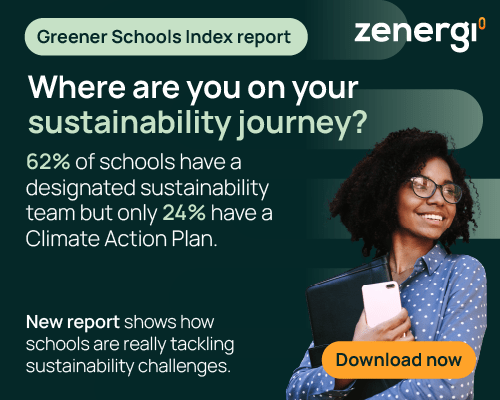
There has been plenty of debate surrounding climate change education in schools, stemming from the recent, student-led strikes
CREDIT: this is an edit of an article which originally appeared on study.international.com (https://www.studyinternational.com/news/climate-change-education-schools/)
Youth activist Greta Thunberg started a movement when she began advocating for climate change awareness, encouraging students to take it upon themselves to incite change because the youth are not given adequate climate change education in schools.
Kids often hear about climate change in the news, and there have been reports that it’s causing them to feel fear and anxiety – which defeats the object of climate change education.
As The Guardian reported: “To date, many attempts to educate the public – and our kids – about climate change have relied on scare tactics that focus on superstorms, massive floods and ominous weather patterns to generate fear; but fear can actually inhibit the desire to learn more and take action – particularly in young people.”
Young learners need academic reasoning and structure in order to contextualise climate change and have an outlet to ask questions that will help put their fear at ease.
Prepare for the future
Teaching kids about climate change is not solely to spur them on to take action, and do their part for their environment, although that is, of course, one aspect of it.
It’s also to prepare them for the future, as young people will be growing up in an era where they will likely be responsible for developing climate change solutions.
“The trouble is that today’s students will be tasked with managing tomorrow’s climate change impact – and jobs requiring science, technology, engineering and math (STEM) skills already are on the rise,” The Guardian article continued.
“That demand will only continue to expand as the effects of climate change progress and more effort is needed to create and execute mitigation tactics and adaptation plans.”
While it will take some time for climate change education in schools to become the norm, there are some recurring themes that are frequently brought up when discussing how to teach this topic effectively.
Hands-on learning
In the era of hands-on learning, it seems likely that students will learn about climate change if they see it first-hand. Schools that want to engage students in climate change education must also be sure that they are leading by example in terms of sustainability and being environmentally-friendly.
For example, if they are teaching students how the earth is suffering because of single-use plastic, they should make efforts to curb plastic waste in school cafeterias.
Fiona Carnie, director of Alternatives in Education, offered a practical example for SchoolsWeek. “St Martin’s Primary School in Devon has a recycling policy which commits students and staff to reduce the amount of materials we use and waste we produce; re–use materials wherever possible, restore what is deemed to have been destroyed and respect our neighbours and our environment.”
When schools practice what they preach, the impact on young minds is stronger and they can see, first-hand, how they can actually make a difference in the environment.
Don’t forget to follow us on Twitter, like us on Facebook, or connect with us on LinkedIn!


Be the first to comment